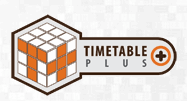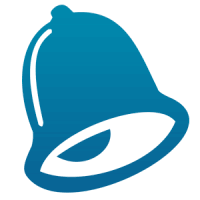What Is School Time Table Software?
School Time Table Software is a digital solution designed to improve the scheduling and management of academic activities in schools. It is intended to properly manage time, resources, and information, resulting in an efficient and well-structured timetable for both students and teachers. This program provides schools with a full platform for easily planning and managing classrooms, exams, events, and other activities.
One of the primary benefits of School Time Table Software is its ability to automate the scheduling process. The software generates a personalized itinerary based on parameters such as instructor availability, class size, and subject requirements, maximizing resource utilization and minimizing conflicts. This not only saves time for school administrators, but also ensures that classes and teachers are evenly distributed throughout the week.
Furthermore, this software allows you to create and adjust the timetable based on changing needs and unforeseen situations. It enables simple rescheduling and substitution of classes with a few clicks, removing the need for manual adjustments and lowering the likelihood of errors. Furthermore, School Time Table Software provides a user-friendly interface that allows teachers and students to easily access and review their schedules.
It also supports connection with other school management systems, promoting smooth communication and cooperation among departments. In addition to scheduling capabilities, this program has reporting and analytics functions that provide useful insights into the school's schedule. It allows administrators to monitor attendance, detect scheduling gaps, and make informed decisions about how to improve.
Overall, investing in School Time Table Software can improve the efficiency and productivity of a school's scheduling process. By automating and simplifying timetable administration, it provides for more efficient use of time and resources, resulting in a harmonic and well-organized learning environment for all students.
What Are The Recent Trends In School Time Table Software?
In recent years, school schedule software has grown in popularity among educational institutions. With the growth of technology, schools are seeking ways to streamline their procedures and enhance scheduling efficiency. As a result, several major trends in school timetable software have evolved to satisfy the increased demand.
1. Cloud-Based Solutions: One of the most significant changes in school timetable software is the move to cloud-based alternatives. This means that the software is hosted on remote servers and may be accessed via the Internet. Cloud-based solutions provide various advantages, including simple access, cost-effectiveness, and the opportunity to communicate in real time. It also eliminates the need for schools to maintain hardware and software, which frees up resources for more important duties.
2. Artificial Intelligence: Another recent trend in school scheduling software is the incorporation of artificial intelligence (AI). AI systems optimize school schedules using data and machine learning, taking into account student and teacher preferences, availability, and class numbers. Not only does this approach save time and effort, but it also ensures that courses are distributed efficiently and fairly. AI-powered software can also adapt the timetable in real time, taking into account any unexpected changes.
3. Mobile Optimization: With the increasing popularity of smartphones and tablets, school timetable software is being customized for mobile devices. This allows teachers, students, and parents to view their calendars at any time and from any location, making it easier to keep organized and prepare ahead. Mobile optimization also allows the software to deliver messages and reminders to users, which reduces the likelihood of missing key lessons or activities.
4. Integration Of Other School Systems: School timetable software is increasingly being connected with other school systems, such as student information systems (SIS) and learning management systems (LMS). This integration enables the seamless flow of data between several platforms, removing the need for human entry and reducing errors. It also provides a thorough perspective of the school's operations, allowing administrators to make more informed decisions.
5. Personalization And Customization: Finally, school time schedule software is being built to meet the unique demands of each school. The software can be adjusted to match the school's specific structure, time limits, and preferences. This ensures that the software is in line with the school's aims and helps optimize the timetable accordingly.
Benefits Of Using School Time Table Software
Introduction: School timetable software is an essential tool for any educational institution aiming to improve their scheduling procedure. With an increasing number of students and classes, manually developing and managing timetables may be both time-consuming and error-prone. School schedule software automates this procedure, making it more efficient and accurate. In this article, we will go over the advantages of using school timetable software and how it can improve the overall operation of your school.
1. Time-Saving And Efficient: One of the primary advantages of adopting school timetable software is that it saves time and effort for teachers, staff, and administrators. With a few clicks, the software can build a timetable that fits all of the requirements, taking into consideration instructor availability, classroom availability, and subject assignments. This gives teachers more time to focus on lesson planning and other vital duties.
2. Reduces Conflicts And Errors: Manually creating a school timetable can frequently lead to difficulties, such as double-booked classrooms or teachers with overlapping classes. Such disagreements can interrupt the entire routine, causing inconvenience for students and teachers. School timetable software reduces conflicts by automatically detecting and resolving them, resulting in a smooth and error-free timetable.
3. Improved Student-Teacher Ratio: Using school time table software to schedule effectively can result in a better student-teacher ratio. By taking into account aspects such as instructor availability, the program may allocate classes fairly among all teachers, ensuring that pupils receive equal attention and knowledge from their teachers.
4. Flexibility And Customization: School timetable software is flexible and customizable, according to the specific needs of each educational institution. The software supports a variety of scheduling scenarios, including half-day timetables, rotating schedules, and special events. It also enables for simple updates and adjustments, eliminating the need to develop a completely new timetable from beginning.
5. Real-Time Updates And Notifications: School time table software allows for real-time adjustments or updates to the timetable. This means that instructors, students, and parents can all access the most recent version of the timetable at any time, reducing misunderstanding and ensuring everyone is on the same page. The software also allows you to send notifications and reminders to keep everyone up to date on any changes or forthcoming events.
6. Integration With Other Systems: School timetable software can work easily with other systems including attendance tracking, grading, and student information. This connection streamlines administrative tasks, resulting in a more complete and efficient school management system.
Important Factors To Consider While Purchasing School Time Table Software?
When it comes to selecting the finest school timetable software, there are various crucial elements to consider in order to acquire the greatest solution for your educational institution.
Here are some crucial aspects to consider before making your purchasing decision:
1. User-Friendly Interface: The program should have a simple interface that both teachers and students can explore and understand. It should have a clear and orderly layout, as well as the flexibility to adapt the timetable to meet your school's specific requirements.
2. Compatibility: Before making a purchase, confirm that the software is compatible with your current systems and devices. It should ideally be accessible across various platforms, including desktop, tablets, and mobile devices, allowing users to access it at any time and from any location.
3. Automation: One of the primary benefits of adopting school timetable software is automation, which considerably decreases teachers' burden. To save time and effort, seek out software that provides automated scheduling, clash detection, and conflict resolution.
4. Customization: Each school has its own set of rules and regulations, and the software should be able to meet their requirements. It should let you design custom templates, add or remove classes, and assign different subjects to teachers.
5. Integration: The program should be compatible with other applications such as CRM and student management systems, making it easier to check student attendance and grades and adjust timetables accordingly.
6. Reporting And Analytics: A decent school timetable software should include strong reporting and analytics tools that will allow you to examine the efficiency of your timetables, detect problems, and make necessary modifications.
7. Assistance And Training: It is critical to select a software provider that provides dependable customer assistance and training to help you become acquainted with the software and troubleshoot any issues that may emerge. Make sure to read customer reviews and ratings to ensure their reliability.
What Are The Key Features To Look For In School Time Table Software?
When shopping for school schedule software, there are a few crucial characteristics to look for that will ensure a successful and efficient experience for both students and teachers.
These features include the following:
1. Modification And Flexibility: A decent school schedule software should enable modification and flexibility in developing timetables depending on the school's specific requirements. This offers subject-based, teacher-based, and class-based scheduling options.
2. Automated Scheduling: The program should include advanced algorithms and technologies for automatically creating schedules based on input data. This saves school administrators time and effort while also ensuring schedule correctness.
3. Real-Time Updates: Look for software that supports real-time updates and timetable adjustments. This is especially critical when unforeseen occurrences, such as teacher absences, arise and the schedule must be changed on short notice.
4. User-Friendly Interface: The program should have a simple interface that administrators and teachers can utilize. This includes things like drag-and-drop capabilities, color coding, and explicit directions.
5. Integration With Other Systems: The software should be compatible with other systems in the school, such as student information systems and attendance tracking software. This enables a more streamlined and coherent approach to managing school operations.
6. Resource Management: A competent school scheduling software should be able to handle classrooms, equipment, and other facilities. This promotes optimal resource utilization and prevents schedule conflicts.
7. Reporting And analytics: Choose software that includes comprehensive reporting and analytics tools. This can help school administrators uncover scheduling problems and optimize resource distribution.
8. Multi-Platform Accessibility: In today's digital world, software must be accessible across multiple platforms, including desktop, mobile, and tablets. This provides quick access to timetables for both teachers and students, regardless of device.
9. Security: The software should include adequate security measures to protect sensitive data, such as student information and facts about school activities. This ensures the secrecy and privacy of all users.
10. Customer Support: Look for software that provides dependable customer support in the event of any technical issues or questions. This assures a smooth and trouble-free experience with the software.
Why Do Businesses Need School Time Table Software?
Businesses in the education industry, whether they be schools, tutoring centers, or training institutes, are responsible for effectively managing and planning their students' schedules. This task can be intimidating and time-consuming, particularly when completed manually. This is where school scheduling software comes in. Businesses can use school timetable software to develop and manage a planned and balanced schedule that meets the needs of both students and teachers.
Gone are the days of manually planning classes, rearranging them due to conflicts, and dealing with human mistake. This software automates the entire process, assuring accuracy while saving valuable time and money. Furthermore, school timetable software provides a user-friendly interface that enables businesses to simply adapt the timetable to meet their individual needs.
They may allocate classes, teachers, and resources from a single dashboard, making it easy to track and administer. Aside from designing and monitoring schedules, school time table software has additional capabilities that assist organizations. These include the capacity to link with other software, such as student information systems and accounting software, to provide smooth data transmission and management.
Some software also provides real-time updates and notifications, allowing organizations to keep track of any changes or conflicts in the schedule. Furthermore, with the growing use of technology in education, having a digital timetabling solution is crucial. It not only improves the efficiency of the process, but it also projects a modern and professional image for the company.
How Much Time Is Required To Implement School Time Table Software?
Implementing School Time Table Software varies based on the software and the school's needs. However, completely implementing and integrating software into a school's operations might take anything from a few weeks to a few months. One of the first tasks in deploying School Time Table Software is to set up the basic setup, which often includes entering school schedule information, class details, and teacher and student information.
This process can take several weeks since it involves meticulous data entry and precision to guarantee the system functions well. The next stage is to teach the school staff how to utilize the software efficiently. This will also be a time-consuming procedure, as all academics and administrators must understand the software's operations and features. Training sessions may need to be split into many sessions to accommodate the schedules of busy employees.
Following the initial setup and training, the school will enter a trial period to evaluate the program and identify any faults or adjustments that are required. This phase might last anywhere between two weeks and a month, depending on the size and complexity of the school's schedule. Once the trial time has ended and all necessary changes have been made, the software is ready for full implementation.
This process can take a week or two since the system is properly integrated and tested to verify that all necessary functionalities and data are correctly transferred. Overall, the time frame for deploying School Time Table Software varies from 4-6 weeks for smaller schools to 2-3 months for larger institutions. It is critical to set aside adequate time for proper training and testing to ensure a seamless transition and successful integration of the software into the school's processes.
What Is The Level Of Customization Available In School Time Table Software?
When it comes to school schedule software, one of the most essential factors for potential purchasers is the level of customization provided. Every school has its own set of unique wants and criteria, and the software must be able to meet these individual needs. Fortunately, many school timetable software alternatives provide a considerable degree of customisation.
This means that users can customize the software to match their school's calendar, subjects, classes, and other preferences. Some software also supports teacher-specific customisation, allowing teachers to enter their own timetables and preferences, making the process even more personalized and efficient. Other adjustable capabilities may include the ability to add new subjects or class times, change the length of those periods, and create class rotation schedules.
This kind of flexibility means that the program can adjust to a school's changing needs while keeping timetables accurate and up to date. Furthermore, many school time table software solutions have configurable notifications and alerts, allowing users to receive reminders for key events, schedule changes, or disputes that need to be resolved.
This helps to streamline communication and keep everyone on the same page. Finally, the level of customization possible in school scheduling software can have a significant impact on its effectiveness and usefulness for a school. When making a purchase, make sure to extensively research the software's customization options and check that it can fit your school's specific requirements.
Which Industries Can Benefit The Most From School Time Table Software?
School scheduling software can be incredibly useful in a range of areas, including education, healthcare, event management, and corporate training. Its diverse features and functionalities make it an effective tool for optimizing scheduling operations and increasing productivity.
The following industries stand to benefit the most from school timetable software:
1. Education: School timetable software is primarily intended for educational institutions including schools, colleges, and universities. These institutions have extensive scheduling needs, with multiple classes, teachers, and disciplines to manage. Timetable software allows schools to effortlessly create, change, and share schedules with students, teachers, and parents. It also enables real-time updates and seamless communication, ensuring everyone is on the same page.
2. Healthcare: Because hospitals, clinics, and other healthcare facilities operate in a high-volume environment, an organized and effective scheduling system is essential. School time table software can assist healthcare businesses in managing staff schedules, patient appointments, and other critical duties. This aids in resource optimization, lowering patient wait times, and enhancing overall service quality.
3. Event Management: The event management profession necessitates meticulous planning and organization to guarantee that every aspect is covered. This is when school scheduling software comes in handy. This program allows event planners to manage venue availability, schedule workers and vendors, and track all events. This not only saves time, but also lowers the possibility of errors and confusion.
4. Corporate Training: In today's fast-paced business environment, employee training is critical to staying ahead of the competition. School scheduling software can be useful for businesses that hold frequent training sessions, workshops, and conferences. It facilitates session scheduling, attendance tracking, and report generation for future training sessions.
Conclusion
Finally, investing in school time table software can help schools and educational institutions manage their schedules more successfully. Such software allows instructors and administrators to create and manage timetables in a complete and structured manner, saving them time and effort. Schools can maintain a smooth and effective operation by implementing features such as automated scheduling, customization choices, and improved communication.
Furthermore, school time table software can help pupils learn more effectively by providing them with a disciplined and well-planned timetable. This can result in improved attendance, fewer disagreements, and, eventually, greater academic success. The user-friendly design of such software also allows students to easily access their timetables and keep track of their chores and obligations.
When selecting school timetable software, consider compatibility with existing systems, customer support, and pricing. It is also critical to thoroughly evaluate the features available and verify that they match the specific requirements of your organization. Overall, investing in school timetable software can result in considerable improvements in efficiency, organization, and student involvement.
We strongly advise you to thoroughly consider your options before deciding on a dependable and appropriate software to assist your school in meeting its scheduling objectives. With the correct software, your institution may have a well-managed and successful academic year.






















